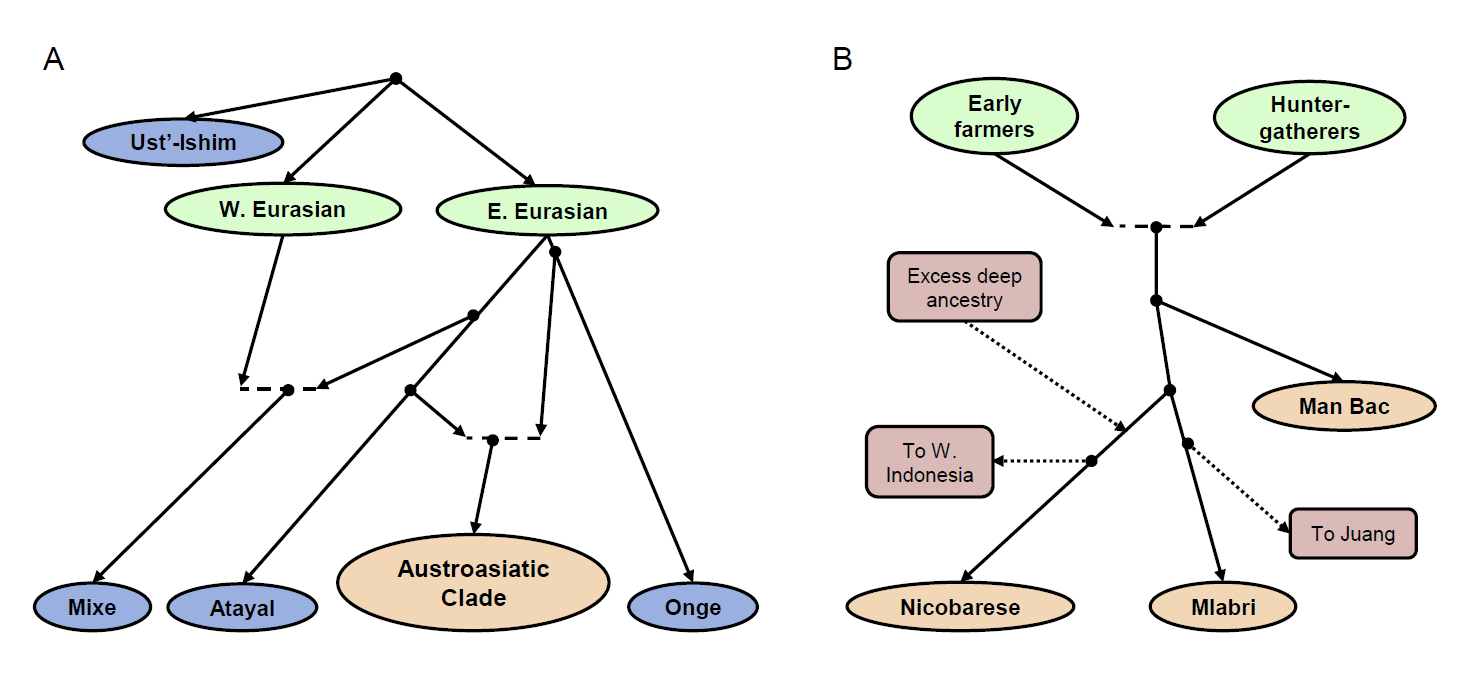Open access preprint at bioRxiv Ancient genomes document multiple waves of migration in Southeast Asian prehistory, by Lipson, Cheronet, Mallick, et al. (2018).
Abstract (emphasis mine):
Southeast Asia is home to rich human genetic and linguistic diversity, but the details of past population movements in the region are not well known. Here, we report genome-wide ancient DNA data from thirteen Southeast Asian individuals spanning from the Neolithic period through the Iron Age (4100-1700 years ago). Early agriculturalists from Man Bac in Vietnam possessed a mixture of East Asian (southern Chinese farmer) and deeply diverged eastern Eurasian (hunter-gatherer) ancestry characteristic of Austroasiatic speakers, with similar ancestry as far south as Indonesia providing evidence for an expansive initial spread of Austroasiatic languages. In a striking parallel with Europe, later sites from across the region show closer connections to present-day majority groups, reflecting a second major influx of migrants by the time of the Bronze Age.

Featured image, from the article: “Overview of samples. (A) Locations and dates of ancient individuals. Overlapping positions are shifted slightly for visibility. (B) PCA with East and Southeast Asians. We projected the ancient samples onto axes computed using the present-day populations (with the exception of Mlabri, who were projected instead due to their large population-speci c drift). Present-day colors indicate language family affiliation: green, Austroasiatic; blue, Austronesian; orange, Hmong-Mien; black, Sino-Tibetan; magenta, Tai-Kadai.”
See also:
- Genomics reveals four prehistoric migration waves into South-East Asia
- Population turnover in Remote Oceania shortly after initial settlement
- Language continuity despite population replacement in Remote Oceania
- Genomic history of South-East Asia: eastern Polynesians, Peninsular Malaysia and North Borneo
- Islands across the Indonesian archipelago show complex patterns of admixture
- Two more studies on the genetic history of East Asia: Han Chinese and Thailand
- Reconstructing the demographic history of the Himalayan and adjoining populations
- Ancient Di-Qiang people show early links with Han Chinese